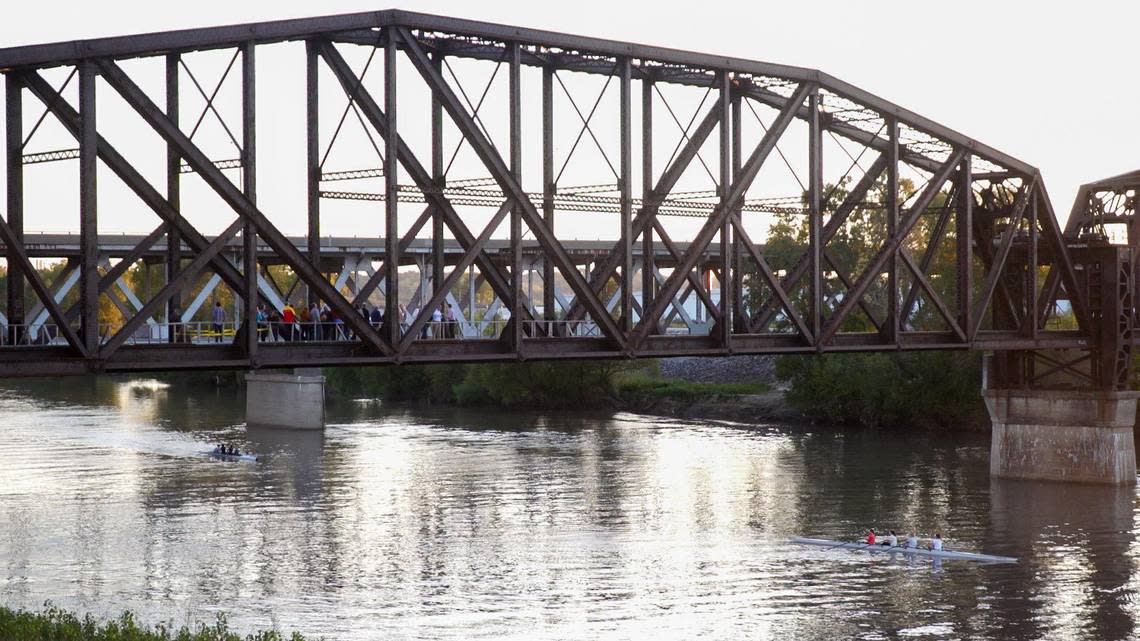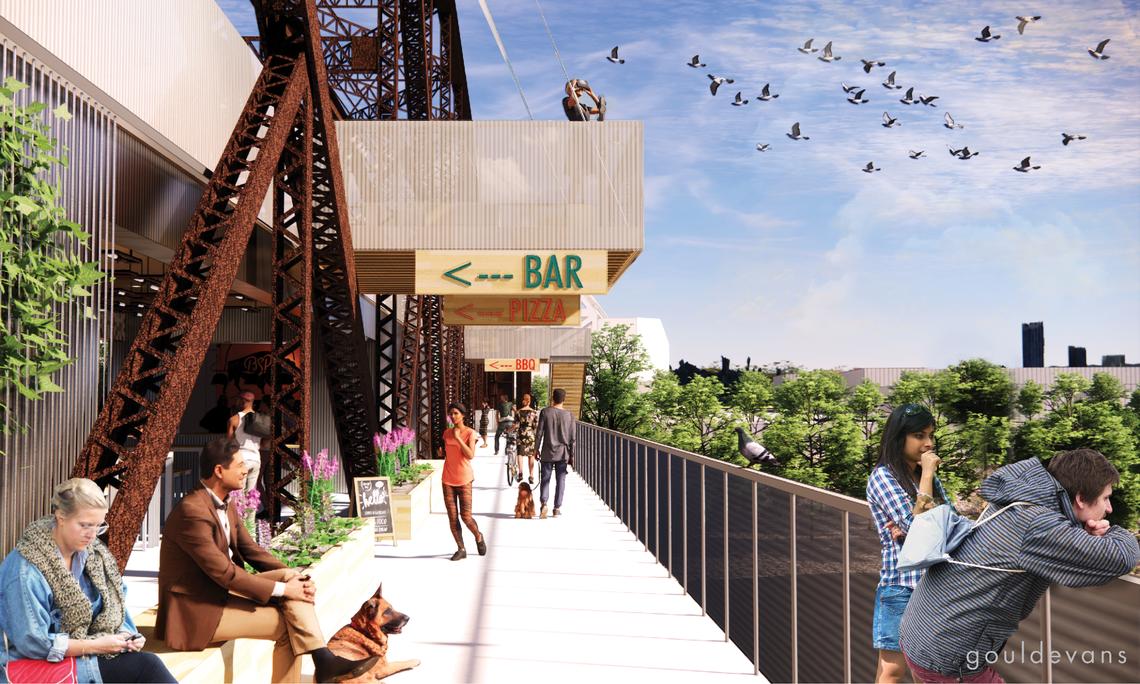‘It’s really happening.’ Construction to start on bridge entertainment venue over Kaw
Construction will begin next month on an ambitious project to transform a rusty old locomotive bridge into a unique entertainment destination over the Kansas River.
“It’s really happening now,” said Michael Zeller of Flying Truss LLC, the company that has worked for years on a plan to redevelop the Rock Island Bridge near the Hy-Vee Arena in the West Bottoms.
Upon completion, Zeller says the long-abandoned bridge will feature bars and restaurants in an entertainment venue unique to Kansas City.
The Chicago, Rock Island and Pacific Railway opened the 702-foot bridge in 1905. But after the need to carry livestock to the stockyards dissipated, the railroad stopped using the bridge and it has been idle since the early 1970s.
But engineers found the bridge was structurally sound, so much of the restoration will be cosmetic.

Beginning in March, L.G. Barcus and Sons of Kansas City, Kansas, will start removing old railroad ties and 1,400 feet of rails. The company will also permanently elevate the bridge four feet, so it is above the height of the river levees, which are being raised by the US Army Corps of Engineers.
While the bridge structure remains in good condition, crews will use some 400 tons of steel and even more concrete to build a new platform across the bridge before turning the project over to local builder Centric, who will complete finishing work on the project.
In 1951, the founder of the same firm installed the screw-lift gates that raise the bridge trusses six feet in advance of flooding.
“Seventy-two years and four generations later, we are back using those original gears and supports to permanently raise the bridge another four feet,” said Dan Gibson, the company’s vice president of estimating.
Because it was a train bridge, the Rock Island span was designed to carry heavy loads. And it never received the corrosive salt that falls on highway bridges each winter.
“We don’t generally turn a railroad bridge into an event space with restaurants and bars and all that stuff,” Gibson said. “Typically, we’re fixing them so trains and vehicles can keep running.”

Flying Truss originally announced plans for local barbecue and pizza brands to set up shop on the redeveloped bridge. Zeller said those details haven’t been finalized, but there’s room for several food and beverage outlets on the bridge.
Zeller expects work to be completed by March 2024.
“It’s becoming Kansas City’s first true waterfront,” he said. “Not only can you hang out and listen to a concert over the river, but you can get on a kayak on the water and listen, too. It adds a water dimension to our city.”
The bridge sits wholly in Kansas, though it was for years owned by the City of Kansas City, Missouri. Now, the Unified Government of Wyandotte County/Kansas City, Kansas, owns the bridge and leases it to Flying Truss.
UG officials could not be reached for comment on Thursday.
In July, the UG approved a special use permit for the development. The UG has invested $2 million, which is expected be repaid through property tax collections and a special sales tax charged on the bridge.
Altogether, Zeller said the project will cost about $12 million, a mix of government funds, philanthropic support and local investors.
This week, the High Line Network named the Rock Island project among its 10 new members. Since the inception of New York City’s High Line in 2016 — which redeveloped an old rail line into an urban park — the network has grown to include 47 projects recognized for transforming underutilized and abandoned infrastructure into new urban landscapes.
While the work on the bridge is noteworthy on its own, city officials hope it will spark a wider revitalization of the riverfront: That could include a new zip line from the top of Hy-Vee Arena across the Kansas River. And a riverboat that could offer tours or floating dinner events.
“I’m from Kansas City. All my life, I’ve heard the West Bottoms are the next thing,” Zeller said. “It finally is.”
